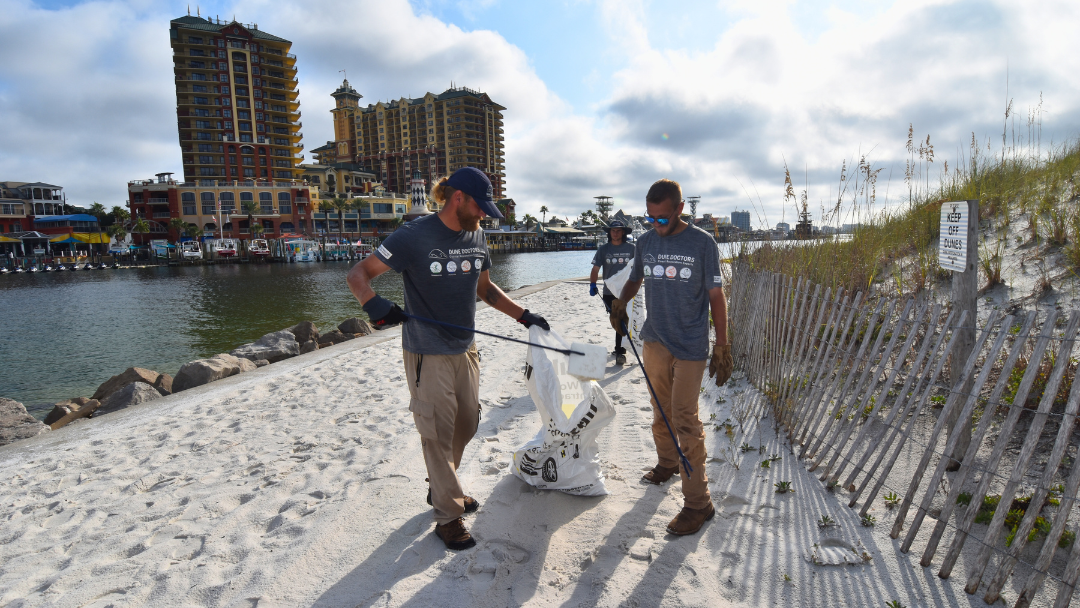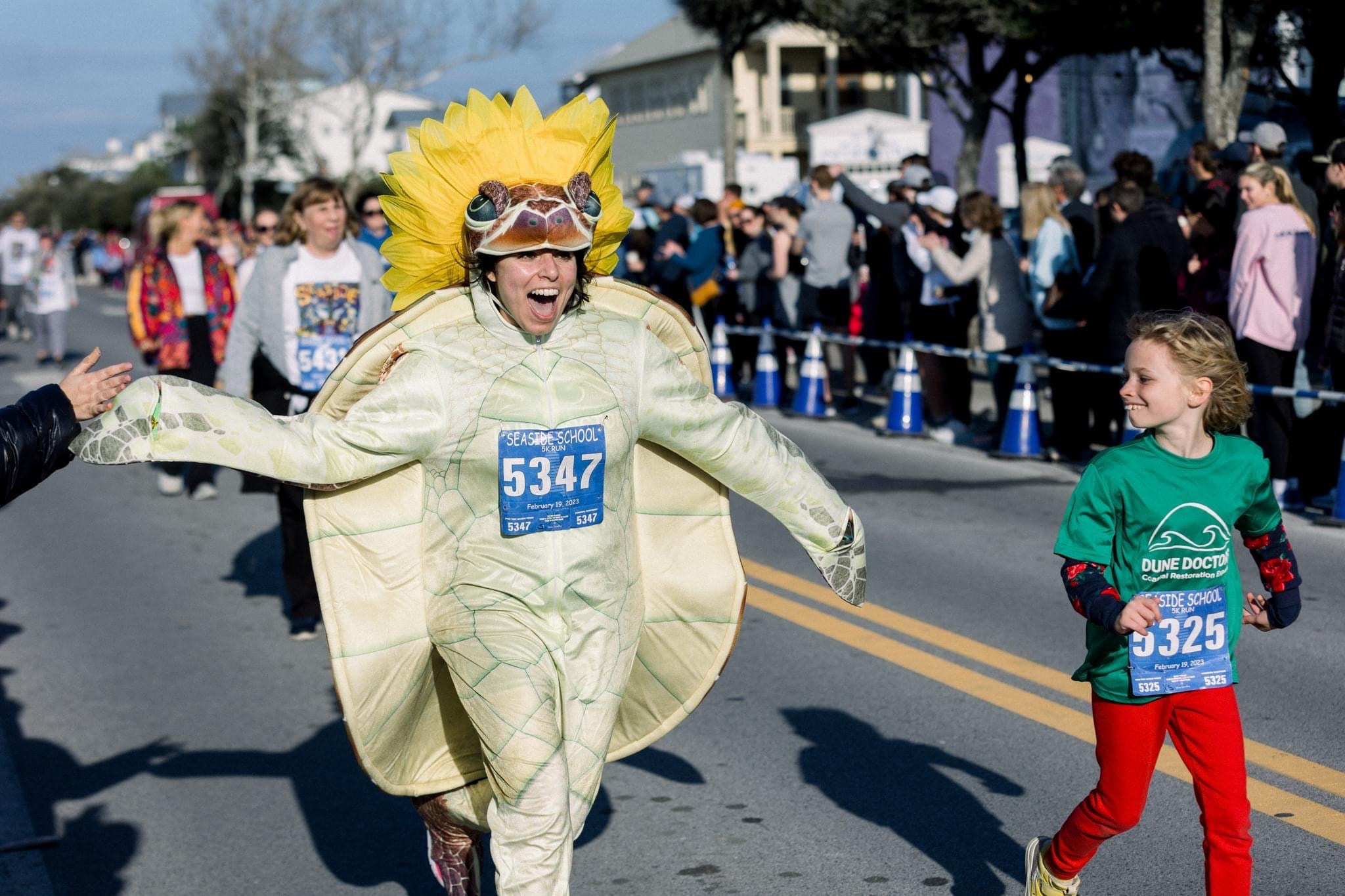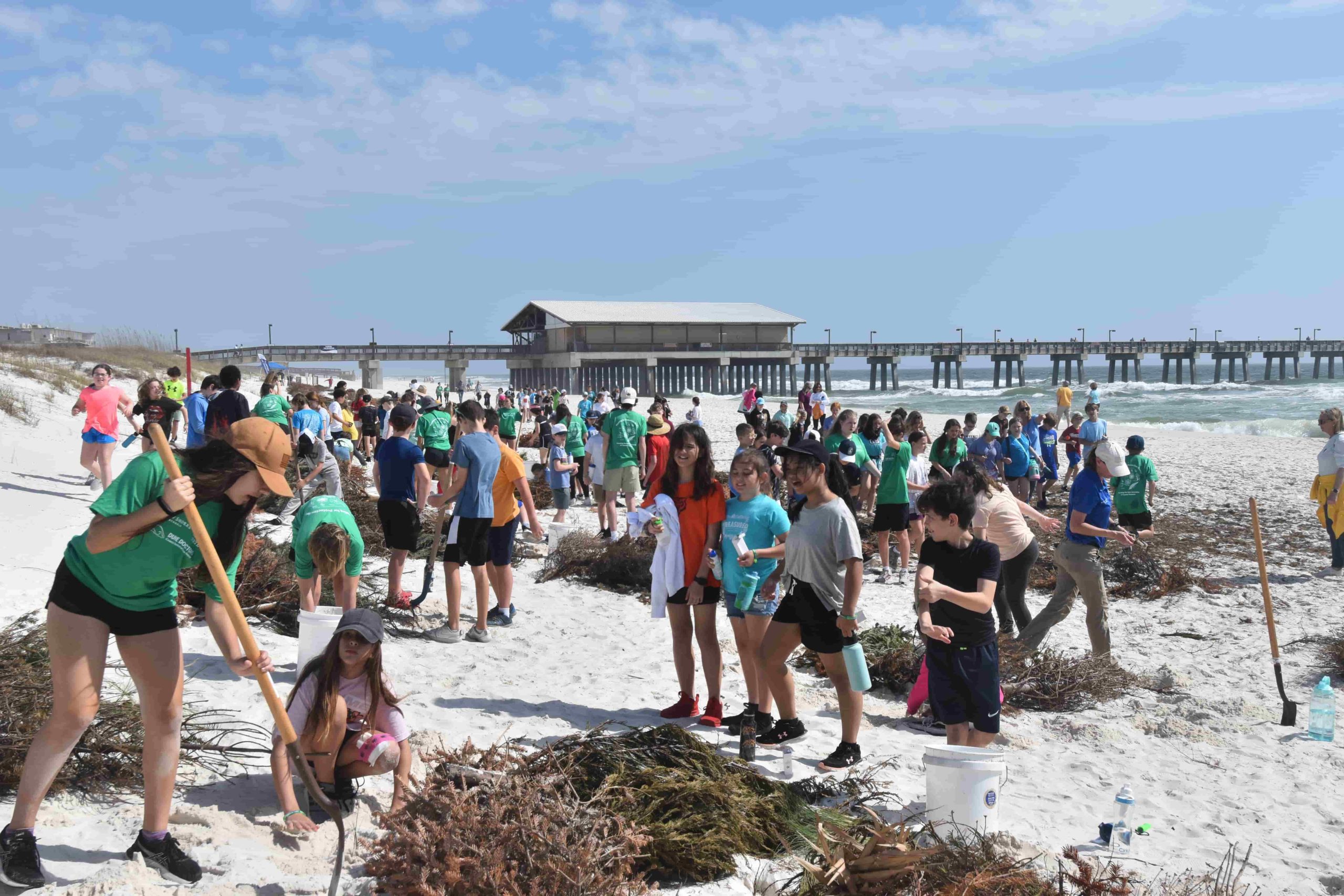2020 brought record-breaking hurricanes and an onslaught of powerful storm surge that eroded hundreds of miles of protective sand dunes along the Gulf Coast. We would like to take this moment to highlight the dangers of the unstable sand cliffs carved by this ongoing erosion.
After storm surge tears away dune-stabilizing plants, the structural integrity of a sand dune is compromised. Currently, the sand cliffs are retaining their shape because the sand is wet but, over the following weeks, they will collapse into a more natural shape.
Sand Cliffs Are Highly Unstable
During a field visit to evaluate the level of damage caused by Hurricane Sally, Frederique Beroset, spotted beachgoers attempting to climb the eroded sand cliffs and sitting at the toe of the cliff. “While it may look small, a cubic yard of sand is upwards of 2,000lbs that can fall on you,” says Frederique Beroset.

Sand Cliffs are as Dangerous as Sand Holes
Harvard medical researcher, Bradley Maron, who has been tracking sand hole collapses worldwide for the past decade says that 60% have been fatal due to the difficulty of retrieving buried victims. The same awareness applied to the potentially lethal consequence of beach holes needs to extend to the imminent collapse of these highly unstable sand cliffs.
Post-Hurricane Beach Safety Rules:
- Do not attempt to climb an eroded sand cliff.
- Do not pull on exposed vegetation protruding from an eroded sand cliff.
- Do not sit at the toe of an eroded sand cliff.
- Do not dig into the side of an eroded sand cliff.
Year-Round Beach Safety Rules:
- Do not dig a hole that is deeper than knee height of the shortest person in sight.
- Cover up holes to avoid creating a deadly trap for other beachgoers, pets, and wildlife.
- Do not walk on sand dunes.






